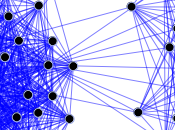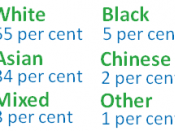How is gender identity influenced by ethnicity, class, and religion? Much like the many ethnic groups, working classes and religions in the world, men and women gain their knowledge in their workplace, but I believe that much of their knowledge came from things learned at home. Based on your upbringing, and the means by which your parents, and their parents before them were brought up, the lives of today play a major role based on that. The degree, to which traditional gender roles are accepted, depends in large parts, on the degree to which the family maintains the traditional patterns. For example, in the working lower class family, it is traditional for the wife to be a homemaker, and the husband the wage earner. The wife has to maintain the households every chore because that is what life was like for their parents based on their up bringing and their means of survival.
Most women that are living under theses guidelines that may very well be single parents historically have worked outside the home, and have learned to be both wage earners and homemakers. Such women have perceived that marriage is not a route to upward mobility, or a way out of poverty. Such women are more likely to complete high school and college versus the small percentage in men that fall under the same conditions. Middle and upper class men and women are higher likely to be more educated and work in more positions of authority. But even still, women find themselves revolving their career schedule around their children's solely based on some religions that state that the woman is still overall responsible for her family's well being, where as a man's role is simply to hold a roof over their heads, and to be the protector.
Discuss the cultural discontinuity and structural inequalities theories. What are the implications of these theories in developing strategies to improve the education experiences for children from diverse backgrounds? Cultural discontinuity theory- attributes the differences in outcomes between students of oppressed groups and students of dominant groups to the differences between the culture and language of the school and those of the students. Most schools reflect the culture and values of the dominant society, and usually ignores or denigrates the culture and values of the ethnic groups from which students come from. For example while being stationed in a foreign country, that host country will on a day to day basis live life based on the norm, or by their culture, and although most foreign countries do not understand cultures other than their own, they tend to celebrate other cultures based on participation from a traditional ethnic event, or taste testing ethnic foods. Structural inequalities theory- emphasizes the status of a particular minority or social class group.


